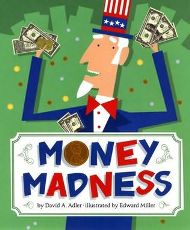
|

|

|

|

|
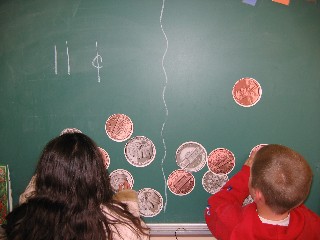
|
Helping Students Make Sense of Money ConceptsUse these books to introduce and/or reinforce money skills. The stories in these books provide real-life connections for students and motivate them to master money skills so they do not encounter the problems the characters face in these books. Book discussions and activities should focus on increasing student proficiency with money exchanges, making change and making sound fiscal decisions. Links to several online activities are included to get your creative juices flowing as you craft connections and follow-up activities for your students. See Money Activities & Strategies for additional suggestions on teaching money concepts and skills. |
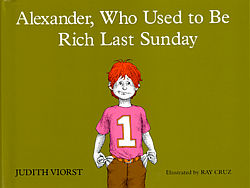
- Alexander, Who Used to Be Rich Last Sunday by Judith Viorst, chronicles Alexander's expenditures and the decisions he makes as he spends the dollar his grandparents gave him.
- See the U.S. Mint's
 http://www.usmint.gov/kids/teachers/lessonPlans/viewLP.cfm?lessonPlanId=93">Lesson Plan for Alexander, Who Used to Be Rich Last Sunday
http://www.usmint.gov/kids/teachers/lessonPlans/viewLP.cfm?lessonPlanId=93">Lesson Plan for Alexander, Who Used to Be Rich Last Sunday
- Check the Smart Book's
 Lesson Plan for a twist in the story that invites older students to investigate probability to solve Alexander's problems with money.
Lesson Plan for a twist in the story that invites older students to investigate probability to solve Alexander's problems with money.
- Read
 third graders' original money stories based on the Alexander book. Then challenge your own students to create their own money adventures.
third graders' original money stories based on the Alexander book. Then challenge your own students to create their own money adventures.
- See the U.S. Mint's
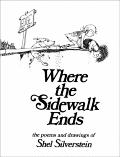
- The poem Smart, written by Shel Silverstein in Where the Sidewalk Ends, is a good-humored look at our money system and a child's misunderstandings about the size and value of coins. This is especially effective when student's "act out" the poem using the large coin cutouts or when students draw their own coin illustrations for the poem.
- See a
 Lesson Plan for Smart: How Smart Are You with Money?
Lesson Plan for Smart: How Smart Are You with Money?
- Download
 My Coins Go Jingle Jangle, a sample glyph activity from Great Glyphs Around the Year by Honi Bamberger & Patricia Hughes.
My Coins Go Jingle Jangle, a sample glyph activity from Great Glyphs Around the Year by Honi Bamberger & Patricia Hughes.
- See a
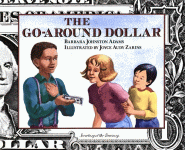
- The Go Around Dollar by Barbara Adams introduces students to important facts about a dollar bill: the symbols on the bill, the ink, paper, printing, etc.
- Print out
 One Dollar Bill for students to examine and color. This site offers both front and back views of the dollar bill.
One Dollar Bill for students to examine and color. This site offers both front and back views of the dollar bill.
- Read Scholastic.com's article about the
 new $10 bill and how it was designed to discourage counterfeiters.
new $10 bill and how it was designed to discourage counterfeiters.
- Can you
 Unscramble the Dollar Bill in this online puzzle? [Requires Java Plugin]
Unscramble the Dollar Bill in this online puzzle? [Requires Java Plugin]
- Visit the
 U.S. Mint for Kids for more information on coins and currency.
U.S. Mint for Kids for more information on coins and currency.
- Creative writing: encourage students to write their own Go Around Dollar stories.
- Print out
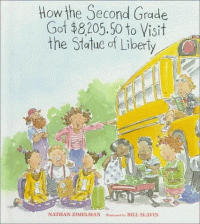
|
How the Second Grade Got $8205.50 to Visit the Statue of LibertyNathan Zimelman takes a humorous look at a second grade fund raising project and the many adventures and misadventures along the way.
|
Pigs Will Be Pigs: Fun with Math and MoneyIn this book, Amy Axelrod tells how the hungry pig family finds an empty refrigerator and then decide to hunt all over the house for money. After finding different amounts of money, they drive to their favorite restaurant, Enchanted Enchilada, and order 4 daily specials from the menu.
|
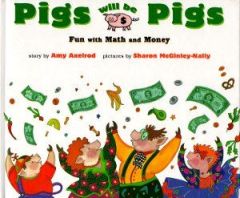
|
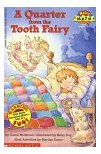
|
A Quarter from the Tooth FairyIn this book, Caren Holtzman [Hello Math Reader, Level 3] recounts in verse how a young boy spends the quarter he got from the Tooth Fairy for his tooth. He first buys a monster for his quarter but then decides it wasn't quite right and returns it, getting 2 dimes and 1 nickel back. Each time he buys and returns an item, he gets his 25 cents back in a different combination of coins, making this book an excellent introduction to the problem of how many different ways students can make 25 cents.
|
If You Made a MillionDavid M. Schwartz begins with a penny, a nickel, a dime, a quarter and works up to the million dollars. Along the way, Schwartz describes what students could buy with the different amounts of money, how many different coins it would take, how much the coins would weigh, how tall the stack of bills would be, etc. to help students appreciate the larger amounts of money.
|
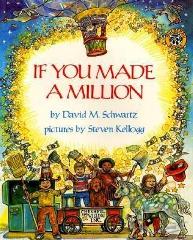 |
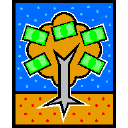
Additional Books on Money:
- The Case of the Shrunken Allowance by Joanne Rocklin [Hello Math Reader, Level 4]
- A Dollar for a Penny by Julie Glass
- The Penny Pot by Stuart J. Murphy
- The Story of Money by Betsy Maestro


